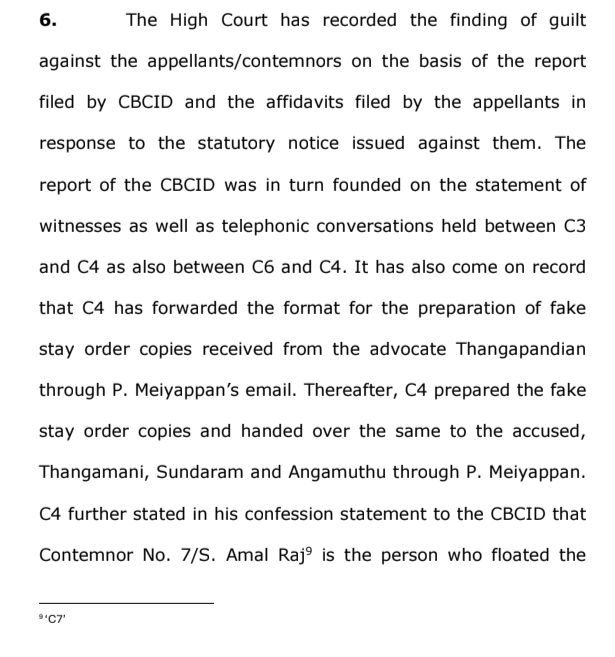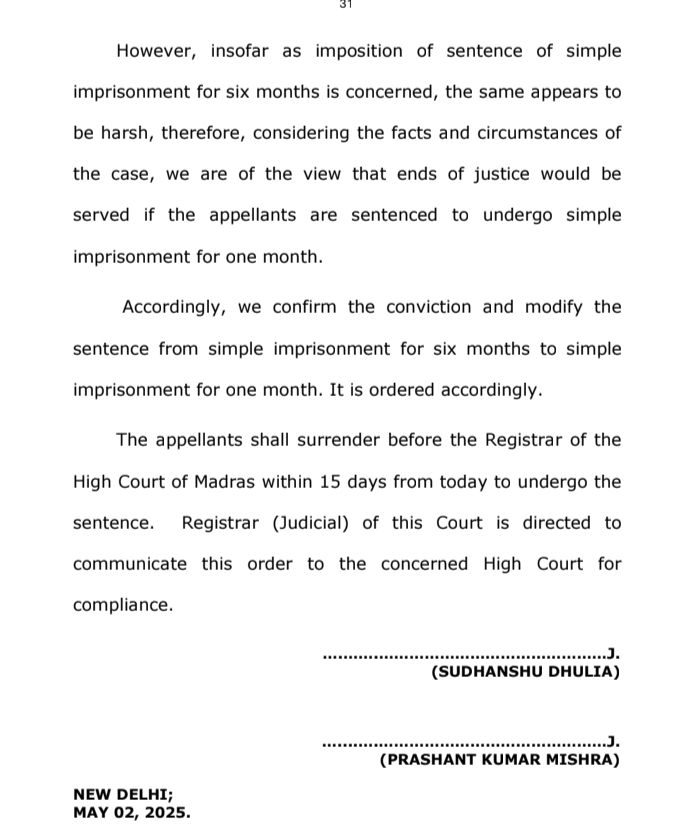Misuse of Section 340 CrPC Curbed: Supreme Court Stresses Caution Before Prosecuting for Forgery
- M.R Mishra

- May 5
- 3 min read
In a significant reaffirmation of procedural fidelity and evidentiary discipline, the Supreme Court in this case wrestled with the misuse of judicial process under Section 340 CrPC. The judgment, which stems from a dispute over property rights cloaked in allegations of forgery and perjury, serves as a textbook reiteration of the principle that criminal law must not be weaponized to settle civil scores.

What's The Matter ?
The dispute arose over a property where the appellants claimed ownership and sought eviction of the respondents, alleging them to be tenants. The respondents, in turn, accused the appellants of filing forged sale deeds and fake rent receipts in court.

What Happened in Court?
The case unfurled from a seemingly mundane property dispute where the appellants sought eviction on grounds of tenancy, only to face a counter-blast in the form of a Section 340 application.
The respondents alleged that forged documents specifically the sale deed and accompanying receipts had been manufactured to dislodge their possession.
The trial court, in a surprising leap of reasoning, found merit in the 340 application, referring the matter to a magistrate without having concluded the substantive dispute itself.
The High Court, in turn, mechanically affirmed this direction. The Supreme Court, however, stayed unimpressed.
Relying on its own precedents in Pritish v. State of Maharashtra and Subrata Roy Sahara v. Union of India, the Court emphasized that the bedrock for invoking Section 340 CrPC lies in a “prima facie” finding during the course of a proceeding that an offence affecting the administration of justice has indeed been committed.

It is not enough that a party alleges forgery; the court must independently arrive at an opinion that such an offence appears to have occurred and that a prosecution is expedient in the interest of justice.
The judgment delineates two distinct but often conflated domains: the civil consequences of forged documents and the criminal culpability stemming from the same. The Supreme Court reminds us that while documents may be suspect, a prosecution cannot be a reflexive reaction to adversarial claims. The opinion under Section 340 must be rooted in judicial application of mind, not adversarial convenience.
This separation ensures that the solemnity of criminal prosecution remains intact and immune from the exigencies of civil litigation. Of particular note is the Court’s criticism of the High Court's reliance on Iqbal Singh Marwah, not for its incorrectness, but for its irrelevance in the procedural posture of this case.
The original dispute had not reached a conclusion. The trial court had not rendered any judgment on the veracity or falsity of the documents. In such a context, the referral under Section 340 was not only premature but also procedurally unsustainable.
Justice Vikram Nath, writing for the bench, captured the ethos of restraint that must guide Section 340 referrals. The Court underscored that the power under this provision is not mechanical it is discretionary, and that discretion must be exercised only when the twin thresholds of expediency and probable commission of offence are satisfied.
This doctrinal calibration is vital in a legal system where process is often used as punishment.
The ruling thus restores a necessary procedural equilibrium.
It protects litigants from vexatious criminal proceedings springing from unresolved civil disputes and shields the criminal justice system from being sullied by premature invocations of perjury and forgery.
At a time when allegations of document tampering have become almost a ritualistic feature of property litigation, this judgment draws a clear constitutional line in the procedural sand.

Shanmugam stands as a doctrinal checkpoint a reminder that Section 340 is a protective measure for the court, not a punitive tool for litigants.
The judgment re-establishes the principle that judicial discretion must not yield to adversarial tactics, and that procedural law, in its wisdom, must walk hand in hand with judicial prudence.







Comments